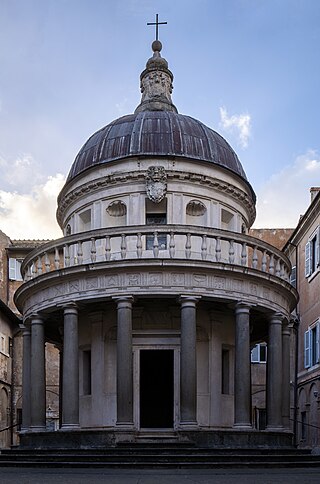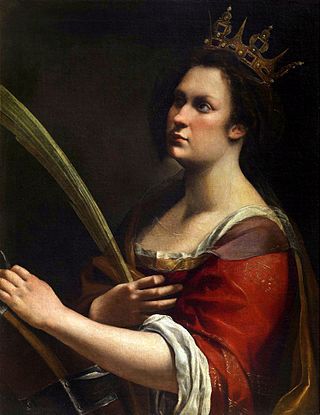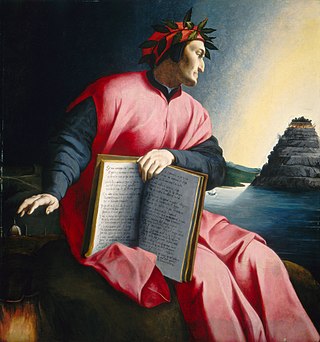External links
- Notable Medieval and Renaissance Women
- Ancient and Renaissance women by Dr. Deborah Vess
- "Renaissance Style Guide". British Galleries. Victoria and Albert Museum . Retrieved 2007-07-16.
- Interactive Resources
- Lectures and Galleries
The following outline is provided as an overview of and topical guide to the Renaissance:
Renaissance – cultural movement that spanned roughly the 14th to the 17th century, beginning in Italy in the Late Middle Ages and later spreading to the rest of Europe. The term is also used more loosely to refer to the historical era, but since the changes of the Renaissance were not uniform across Europe, this is a general use of the term.
v** Poland Renaissance technology
Leonardo da Vinci with Michelangelo and Raphael form the traditional trinity of great masters of the Renaissance.

The Renaissance is a period in history and a cultural movement marking the transition from the Middle Ages to modernity, covering the 15th and 16th centuries and characterized by an effort to revive and surpass the ideas and achievements of classical antiquity; it was associated with great social change in most fields and disciplines, including art, architecture, politics, literature, exploration and science. It began in the Republic of Florence, then spread to the rest of Italy and later throughout Europe. The term rinascita ("rebirth") first appeared in Lives of the Artists by Giorgio Vasari, while the corresponding French word renaissance was adopted into English as the term for this period during the 1830s.

Renaissance architecture is the European architecture of the period between the early 15th and early 16th centuries in different regions, demonstrating a conscious revival and development of certain elements of ancient Greek and Roman thought and material culture. Stylistically, Renaissance architecture followed Gothic architecture and was succeeded by Baroque architecture and neoclassical architecture. Developed first in Florence, with Filippo Brunelleschi as one of its innovators, the Renaissance style quickly spread to other Italian cities. The style was carried to other parts of Europe at different dates and with varying degrees of impact.

Classicism, in the arts, refers generally to a high regard for a classical period, classical antiquity in the Western tradition, as setting standards for taste which the classicists seek to emulate. In its purest form, classicism is an aesthetic attitude dependent on principles based in the culture, art and literature of ancient Greece and Rome, with the emphasis on form, simplicity, proportion, clarity of structure, perfection, restrained emotion, as well as explicit appeal to the intellect. The art of classicism typically seeks to be formal and restrained: of the Discobolus Sir Kenneth Clark observed, "if we object to his restraint and compression we are simply objecting to the classicism of classic art. A violent emphasis or a sudden acceleration of rhythmic movement would have destroyed those qualities of balance and completeness through which it retained until the present century its position of authority in the restricted repertoire of visual images." Classicism, as Clark noted, implies a canon of widely accepted ideal forms, whether in the Western canon that he was examining in The Nude (1956).

Renaissance humanism was a worldview centered on the nature and importance of humanity, that emerged from the study of Classical antiquity. This first began in Italy and then spread across Western Europe in the 14th, 15th, and 16th centuries. During the period, the term humanist referred to teachers and students of the humanities, known as the studia humanitatis, which included the study of Latin and Ancient Greek literatures, grammar, rhetoric, history, poetry, and moral philosophy. It was not until the 19th century that this began to be called humanism instead of the original humanities, and later by the retronym Renaissance humanism to distinguish it from later humanist developments. During the Renaissance period most humanists were Christians, so their concern was to "purify and renew Christianity", not to do away with it. Their vision was to return ad fontes to the simplicity of the Gospels and of the New Testament, bypassing the complexities of medieval Christian theology.

Renaissance art is the painting, sculpture, and decorative arts of the period of European history known as the Renaissance, which emerged as a distinct style in Italy in about AD 1400, in parallel with developments which occurred in philosophy, literature, music, science, and technology. Renaissance art took as its foundation the art of Classical antiquity, perceived as the noblest of ancient traditions, but transformed that tradition by absorbing recent developments in the art of Northern Europe and by applying contemporary scientific knowledge. Along with Renaissance humanist philosophy, it spread throughout Europe, affecting both artists and their patrons with the development of new techniques and new artistic sensibilities. For art historians, Renaissance art marks the transition of Europe from the medieval period to the Early Modern age.

The Italian Renaissance was a period in Italian history covering the 15th and 16th centuries. The period is known for the initial development of the broader Renaissance culture that spread across Western Europe and marked the transition from the Middle Ages to modernity. Proponents of a "long Renaissance" argue that it started around the year 1300 and lasted until about 1600. In some fields, a Proto-Renaissance, beginning around 1250, is typically accepted. The French word renaissance means "rebirth", and defines the period as one of cultural revival and renewed interest in classical antiquity after the centuries during what Renaissance humanists labelled as the "Dark Ages". The Italian Renaissance historian Giorgio Vasari used the term rinascita ("rebirth") in his Lives of the Most Excellent Painters, Sculptors, and Architects in 1550, but the concept became widespread only in the 19th century, after the work of scholars such as Jules Michelet and Jacob Burckhardt.

In art history, "Old Master" refers to any painter of skill who worked in Europe before about 1800, or a painting by such an artist. An "old master print" is an original print made by an artist in the same period. The term "old master drawing" is used in the same way.

The Northern Renaissance was the Renaissance that occurred in Europe north of the Alps. From the last years of the 15th century, its Renaissance spread around Europe. Called the Northern Renaissance because it occurred north of the Italian Renaissance, this period became the German, French, English, Low Countries and Polish Renaissances, and in turn created other national and localized movements, each with different attributes.

The English Renaissance was a cultural and artistic movement in England during the late 15th, 16th and early 17th centuries. It is associated with the pan-European Renaissance that is usually regarded as beginning in Italy in the late 14th century. As in most of the rest of Northern Europe, England saw little of these developments until more than a century later within the Northern Renaissance. Renaissance style and ideas were slow to penetrate England, and the Elizabethan era in the second half of the 16th century is usually regarded as the height of the English Renaissance. Many scholars see its beginnings in the early 16th century during the reign of Henry VIII. Others argue the Renaissance was already present in England in the late 15th century.

The culture of Europe is diverse, and rooted in its art, architecture, traditions, cuisines, music, folklore, embroidery, film, literature, economics, philosophy and religious customs.

The French Renaissance was the cultural and artistic movement in France between the 15th and early 17th centuries. The period is associated with the pan-European Renaissance, a word first used by the French historian Jules Michelet to define the artistic and cultural "rebirth" of Europe.

The Renaissance in the Low Countries was a cultural period in the Northern Renaissance that took place in around the 16th century in the Low Countries.

New Bulgarian University is a private university based in Sofia, the capital of Bulgaria. Its campus is in the western district of the city, known for its proximity to the Vitosha nature park. The university also owns multiple other buildings across the country, as well as its own publishing house and a library.

The Penn State University Press, also known as The Pennsylvania State University Press, is a non-profit publisher of scholarly books and journals. Established in 1956, it is the independent publishing branch of the Pennsylvania State University and is a division of the Penn State University Library system.
The following outline is provided as an overview of and topical guide to the Middle Ages:

The migration waves of Byzantine Greek scholars and émigrés in the period following the end of the Byzantine Empire in 1453 is considered by many scholars key to the revival of Greek studies that led to the development of the Renaissance humanism and science. These émigrés brought to Western Europe the relatively well-preserved remnants and accumulated knowledge of their own (Greek) civilization, which had mostly not survived the Early Middle Ages in the West. The Encyclopædia Britannica claims: "Many modern scholars also agree that the exodus of Greeks to Italy as a result of this event marked the end of the Middle Ages and the beginning of the Renaissance", although few scholars date the start of the Italian Renaissance this late.

Realism in the arts is generally the attempt to represent subject matter truthfully, without artificiality and avoiding speculative and supernatural elements. The term is often used interchangeably with naturalism, although these terms are not synonymous. Naturalism, as an idea relating to visual representation in Western art, seeks to depict objects with the least possible amount of distortion and is tied to the development of linear perspective and illusionism in Renaissance Europe. Realism, while predicated upon naturalistic representation and a departure from the idealization of earlier academic art, often refers to a specific art historical movement that originated in France in the aftermath of the French Revolution of 1848. With artists like Gustave Courbet capitalizing on the mundane, ugly or sordid, realism was motivated by the renewed interest in the common man and the rise of leftist politics. The realist painters rejected Romanticism, which had come to dominate French literature and art, with roots in the late 18th century.

Italophilia is the admiration, appreciation or emulation of Italy, its people, culture and its contributions to Western civilization. Its opposite is Italophobia.
This is an alphabetical index of articles related to the Renaissance.